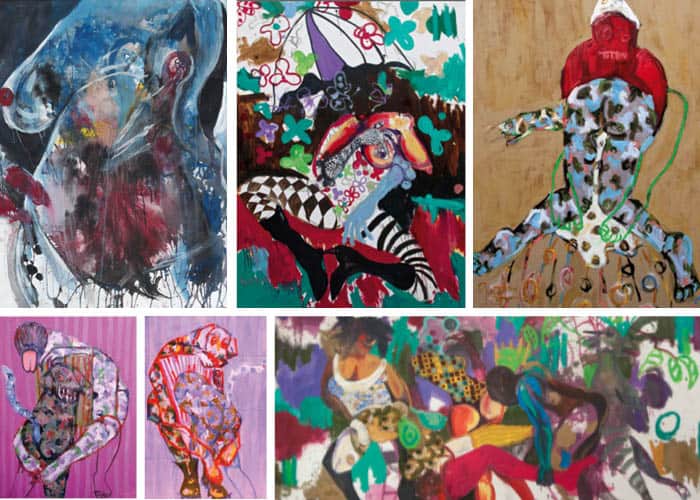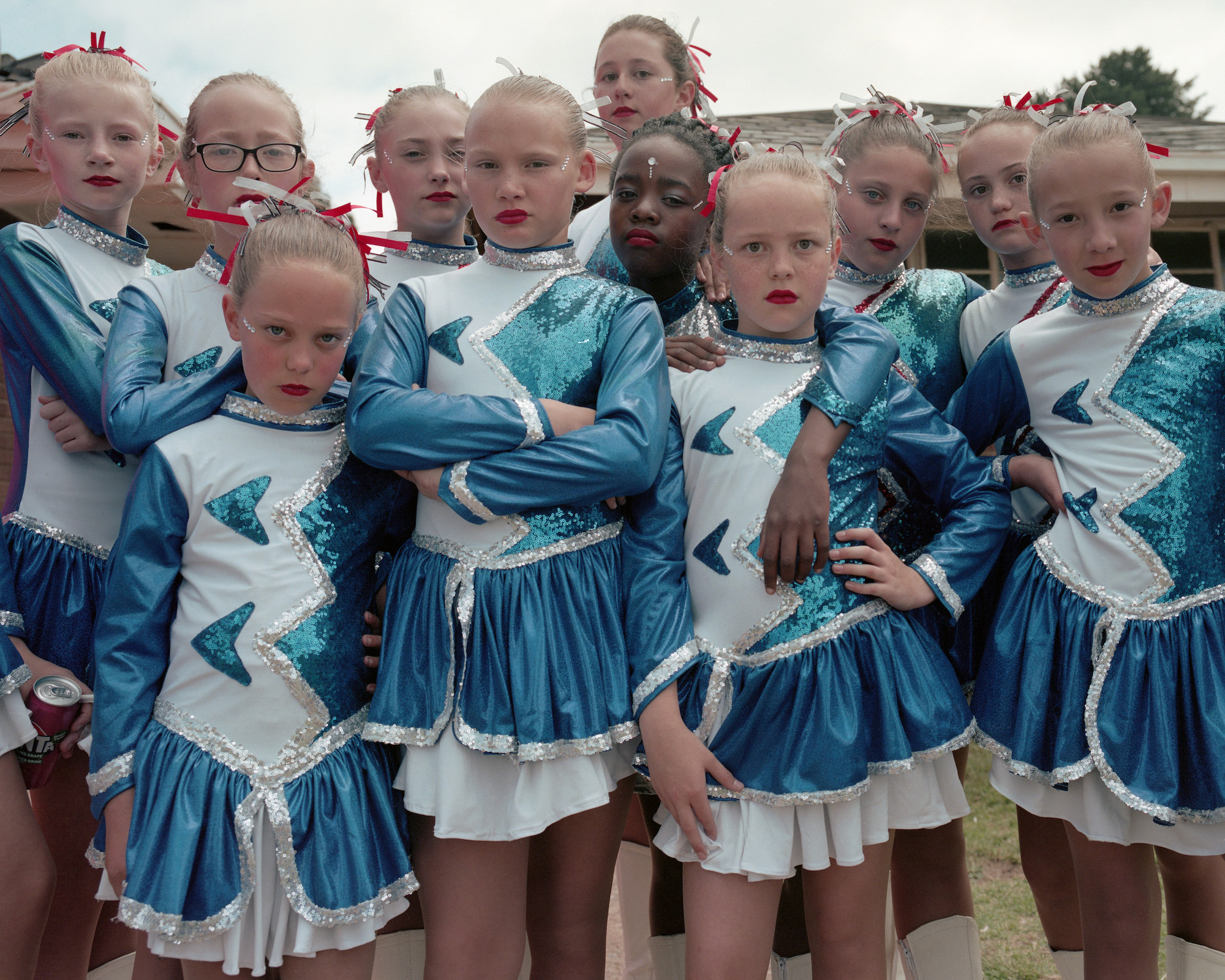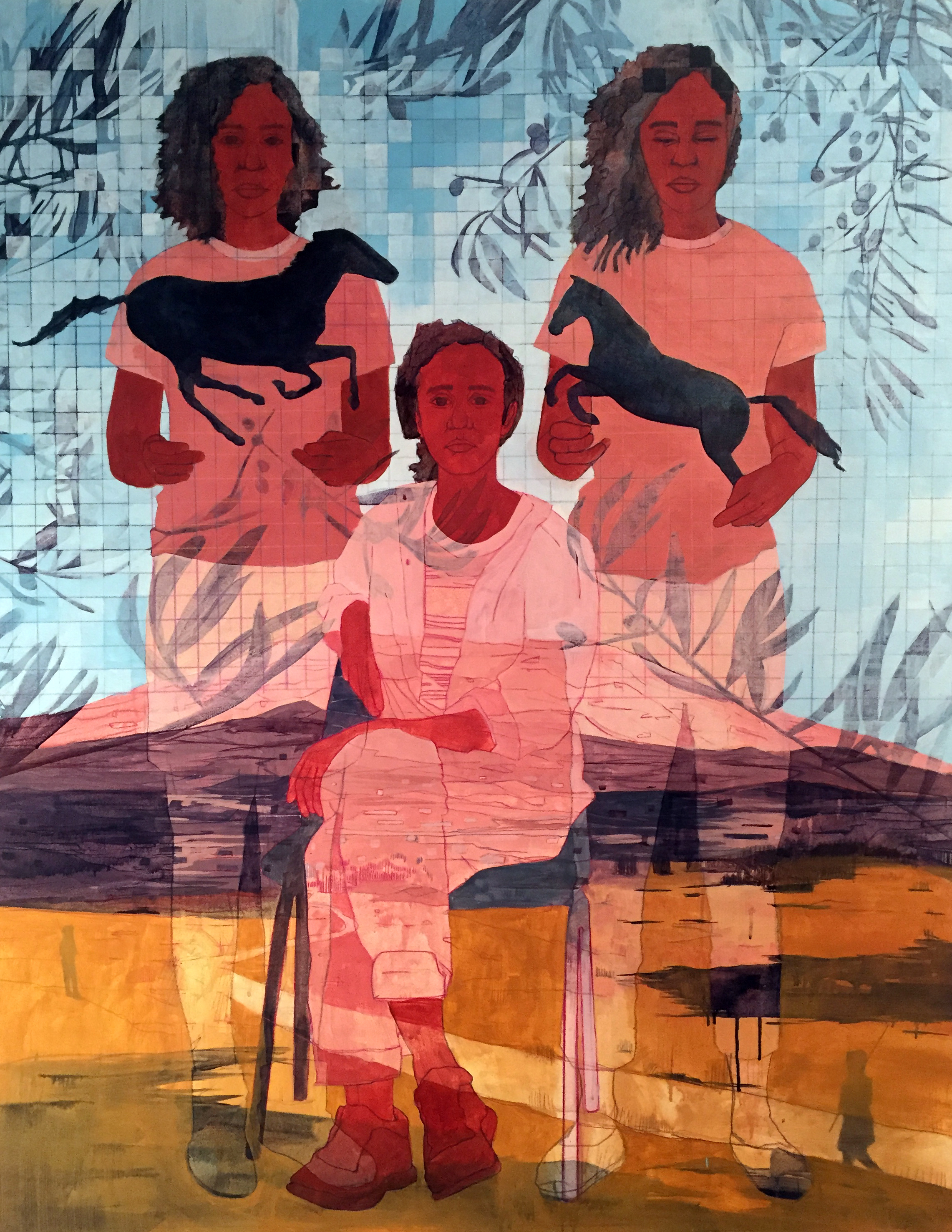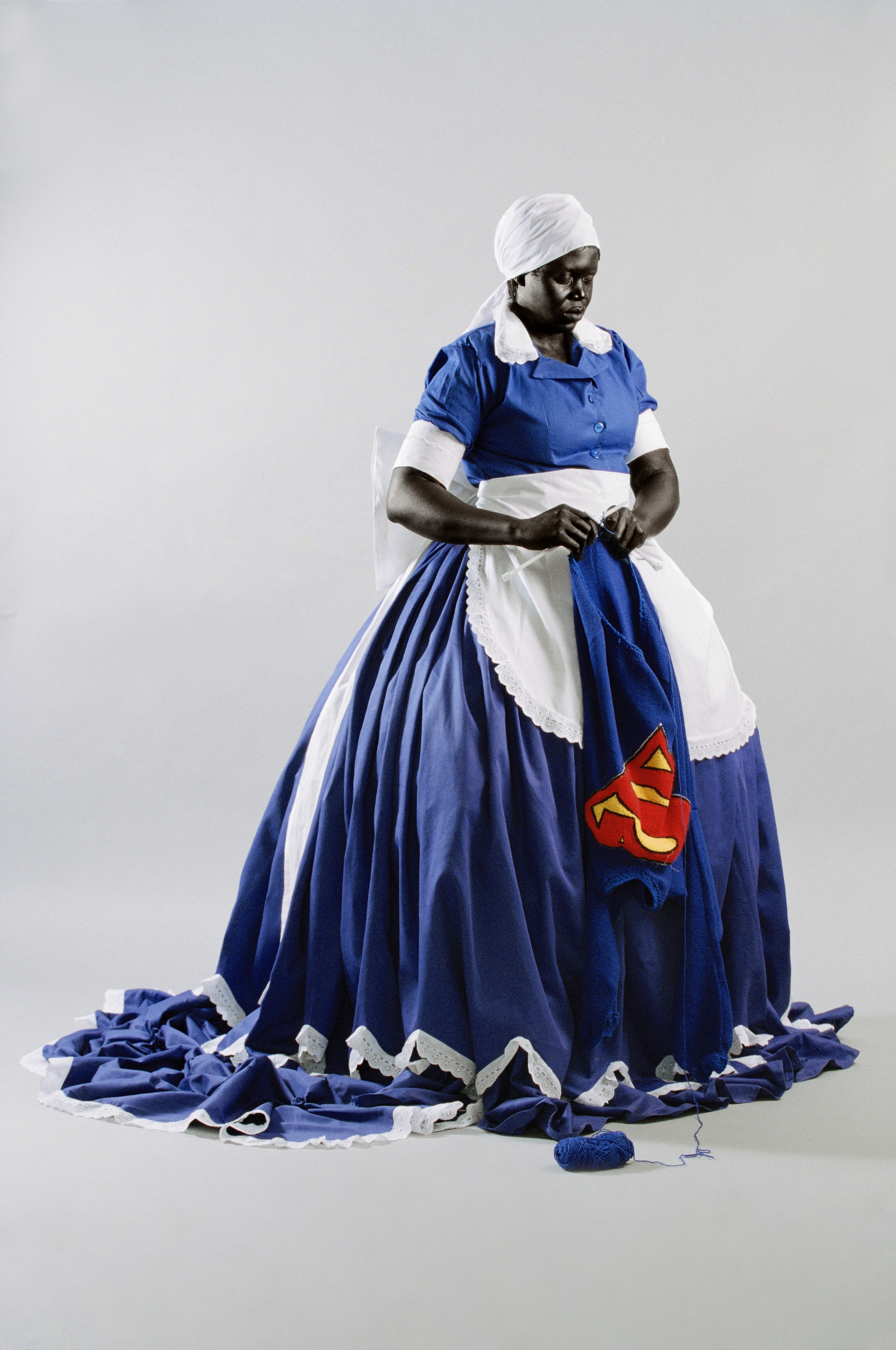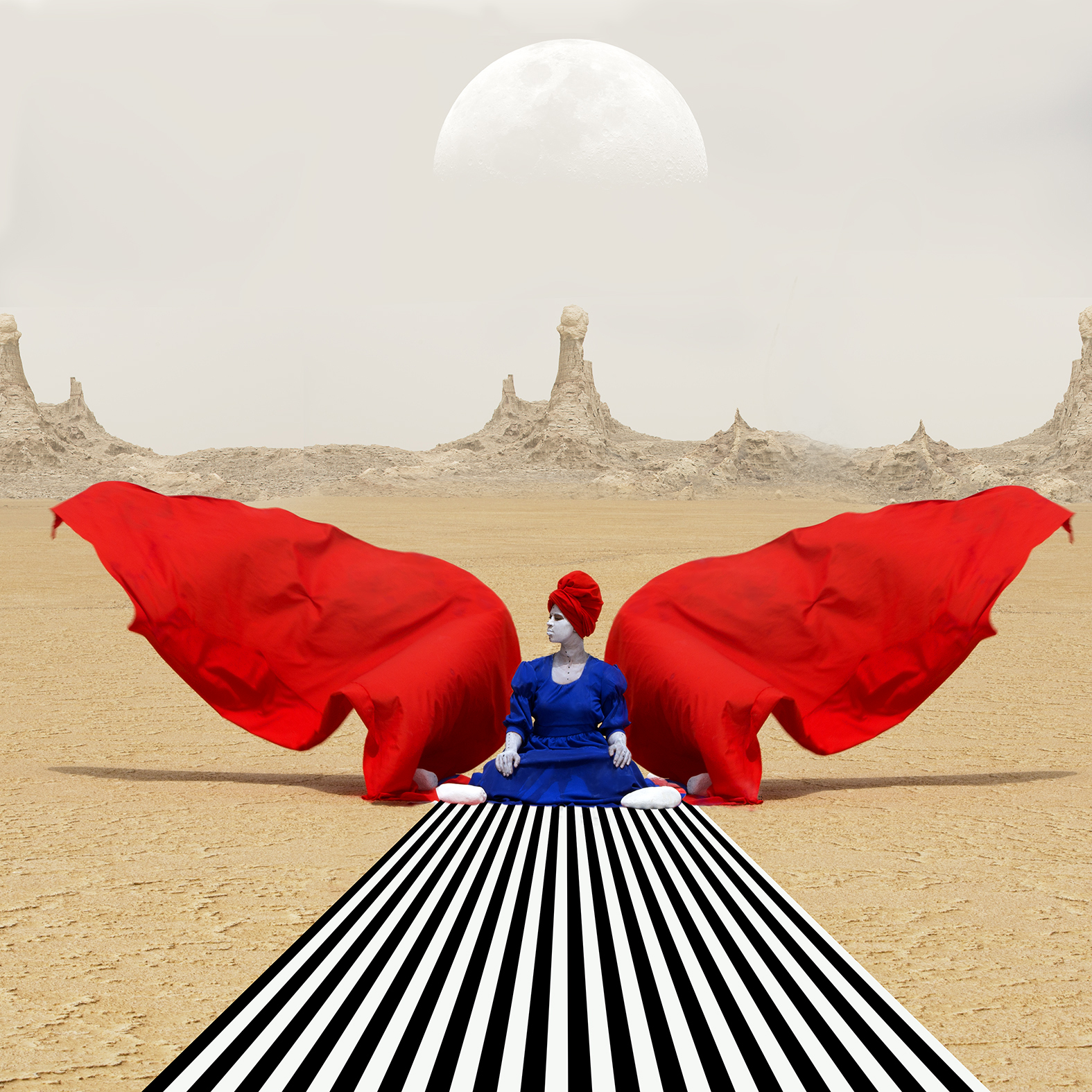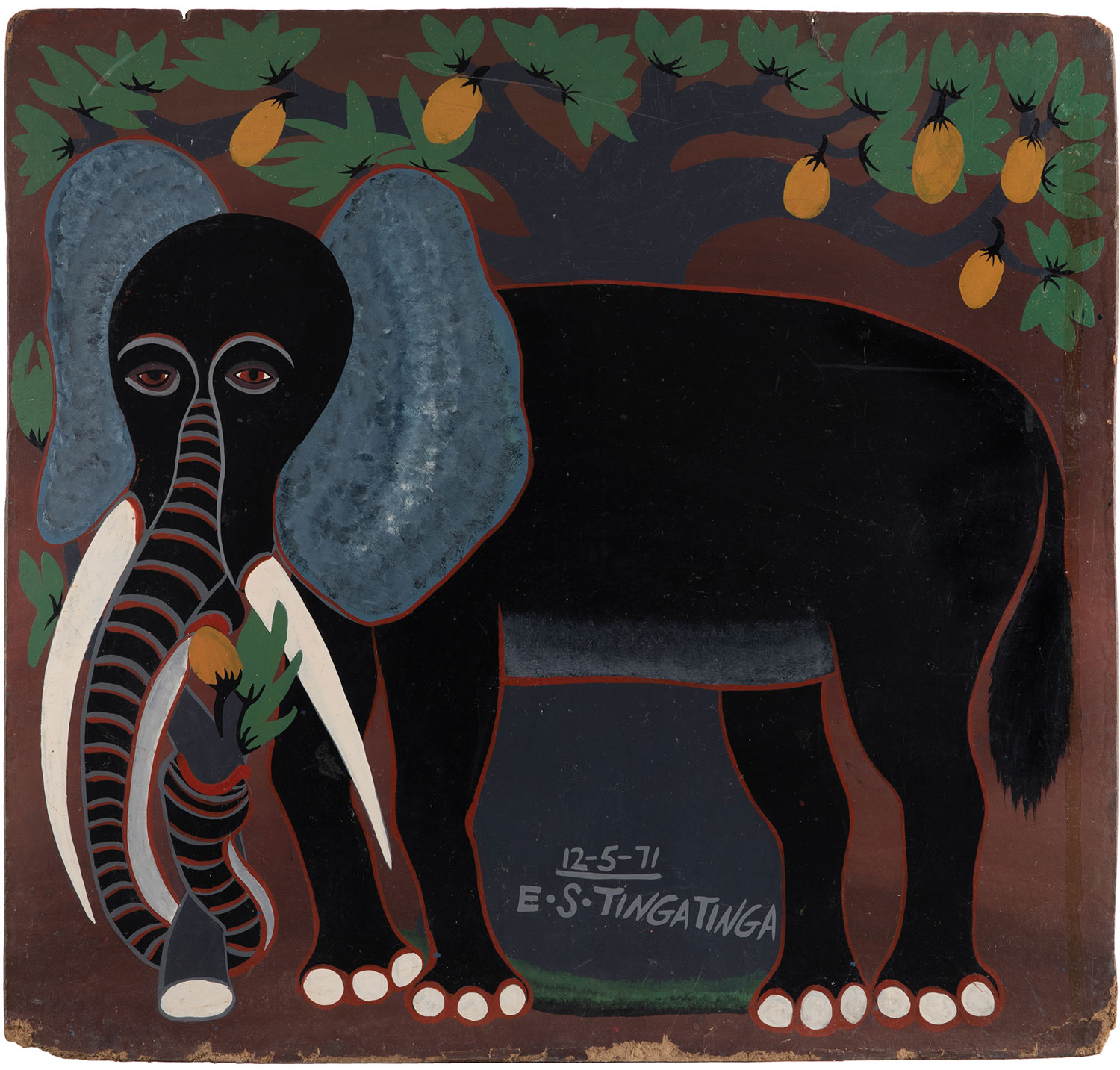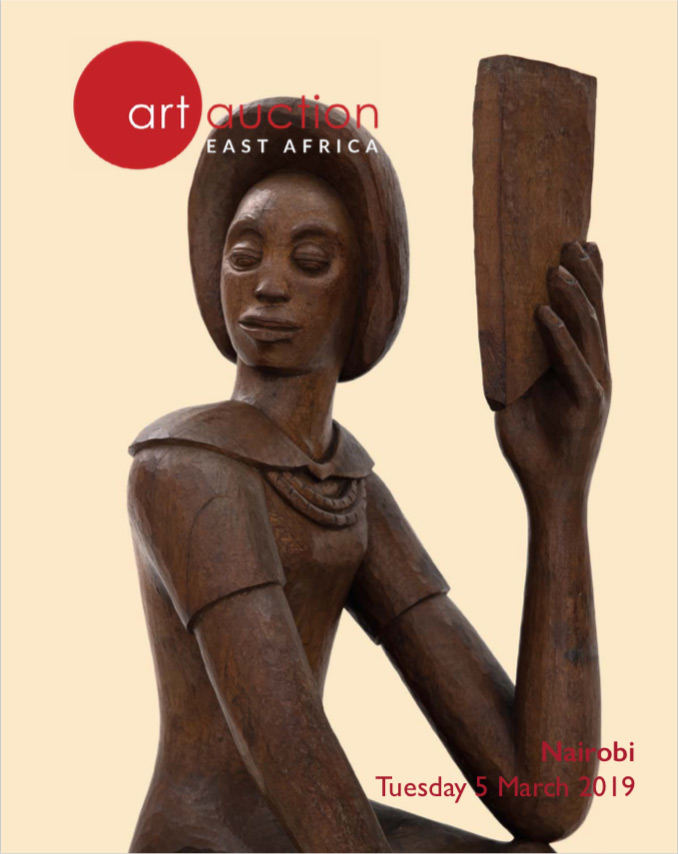


BEN ENWONWU | CHRISTINE
Estimate: 100,000 - 150,000 GBP
Lot Sold: 1,095,000GBP
Lot Details
Description
BEN ENWONWU
Nigerian
1921-1994
CHRISTINE
signed and dated 1971 (lower left)
oil on canvas
76.3 by 61cm., 30 by 24in.
Nigerian
1921-1994
CHRISTINE
signed and dated 1971 (lower left)
oil on canvas
76.3 by 61cm., 30 by 24in.
Condition Report
Cataloguing
Provenance
Acquired directly from the artist in 1971
Thence by descent
Thence by descent
Exhibited
Lagos, Exhibition Centre, Management Consultant Services Ltd. presents Professor Ben Enwonwu's Paintings and Sculptures, 23 May-6 June 1974, illustrated in the catalogue, cat no. 56A, titled 'Mrs. Christine Davis'
Catalogue Note
Spanning
close to 60 years, Ben Enwonwu’s artistic career followed one of the
most important periods of Modern Nigerian history; the journey from a
British colony to a newly independent African nation. Nigeria gained
independence from the United Kingdom on 1 October 1960, and with it the
country was in search of a new post-colonial identity. Ben Enwonwu MBE
became an advocate for a new Nigerian national culture and a pioneer of
African modernism. By his passing in 1994, the artist was, and would
continue to be, considered one of the most revered African artists of
the 20th century.
Ben Enwonwu was born in 1917 in Onitsha, eastern Nigeria, to a mother who ran a successful textile business and a father who was a retired technical assistant and a reputable sculptor, from whom the artist learned his early carving skills. In addition to being an acclaimed painter and sculptor, the artist was also a distinguished writer and art critic.
Enwonwu studied fine arts at the Umuahia Government College in 1934, before receiving a scholarship to study in the UK in 1944, where he attended Goldsmiths College and the Slade School of Fine Arts. During this time, he studied European art movements such as Symbolism and Fauvism. Ben Enwonwu’s mastery in combining European techniques and traditional Igbo aesthetics is central to his artistic oeuvre. Enwonwu returned to Nigeria in 1948 to begin his federally appointed position of Art Adviser of the Colonial Office. The artist continued his practice in Nigeria and in 1949 was declared by Time magazine as ‘Africa’s Greatest Artist’.
The present lot was painted in 1971, the same year that Enwonwu was appointed the first professor of Fine Art at the University of Ife. Assuming this position in the wake of the Biafran War (1967-1970), Enwonwu sought to expose his students to ideas of national reconstruction and reconciliation and the effect of this tense civil war on Nigeria’s post-colonial cultural identity.
Enwonwu produced some of his most accomplished works in the years directly following the end of the war, including the four known portraits of Adetutu Ademiluyi (known as Tutu), a Yoruba princess from the ancient Kingdom of Ife and this portrait of Christine. Painted just prior to Enwonwu’s famed portraits of the Yoruba princess, Christine is a clear precursor to these works. The present lot bears an especially close resemblance to Enwonwu’s most famed portrait of Tutu, the whereabouts of which are currently unknown. While Enwonwu is well-known as a portraitist, portraits of this high calibre are exceedingly rare.
Christine herself was born in New York, the step-daughter of a renowned Ghanaian lawyer. In her early twenties, she moved back to Ghana to reside with her stepfather before relocating to Lagos, Nigeria in 1969. In Lagos, Christine and her husband Elvis developed a close friendship with the artist. Commissioned as a gift to the sitter, the present lot is a product of the friendship between Ben Enwonwu, Christine and her husband. Known for her elegance and dignified beauty, Christine had the innate ability to stay composed and immobile for as long as the artist required. Enwonwu’s loose brush strokes and vibrant oil captures Christine transient beauty. The portrayal of her long-neck, glowing skin, curved lips and delicate smile are testament of the warmth and grace of the sitter. Her devotion and composure are conveyed in the portrait and is a testament of the trust and complicity between the artist and Christine.
The similarities between Christine and Tutu are striking. Stylistically, the artist employs similar techniques in both works, a mixture of clearly defined and loose brushstrokes. Christine, in the present lot, sits up tall and elegant, there is a subtle emotion conveyed through her gentle Mona Lisa-like smile and a sense of ease in her eyes which emanates to the viewer. Christine and Tutu are bonded, especially in the dignified presentation of both figures, translated through their embodiment of a regal posture and authority of a statesman. This regal and dignified pose is highlighted in both Christine and Tutu, as both sitters share a mesmeric frontal gaze, along with their torsos both positioned in an outward and angular manner, as present in historical Western paintings. There is also backlight present in both Christine and Tutu. In both portraits, the light takes on a luminescent character, emphasizing the unique features of both subjects, chiefly the elongated necks, a feature recognisable in Enwonwu’s work. The light in both works forms a halo, and giving both Christine and Tutu a delicate, yet iridescent and angelic glow.
Christine is said to have had a great appreciation for different cultures which she encountered. Being a stylist, she sought to express herself through the traditional attires of the locals. This is further reinforced in the present lot, where she is depicted wearing a beautifully tied headscarf called ‘gele’, which signifies her married status. Although Christine was not born in Lagos/Nigeria, her attire shows her affinity with the region and a and a deep respect to West African tradition.
-----
AFRICA | CULTURE IS BOUGHT AND PAID FOR | MAKE NO MISTAKE, ART IS POWER!! AFRICAN ART IS NOT ABOUT PORTRAITS OR STILL LIFE BUT STILL, HERE WE ARE?
THIS NON CONFRONTATIONAL ARTIST, THIS CREATIVE COCONUT IS THE BEST OF NIGERIA? WHAT FOOLISHNESS, WHAT DISHONESTY, WHAT LIES WE SHARE AS WE SLIP UNDER THE UGLY SHEETS OF (S)HELL.
HOW IS IT THAT NATIONAL TRAITORS CAN BECOME NATIONAL TREASURES? TO LEARN FROM THE OPPRESSORS TO BECOME THE OPPRESSOR. THE FORCES BEHIND THIS UNJUSTIFIED SUCCESSFUL RISE ARE PURE EVIL; SO EXTREMELY WHITE. MONEY TALKS AND BULLSHIT WALKS, EVERYBODY LOVES THE COLOUR OF MONEY ~ GREEN CAN MAKE A HISTORY OF YOUR CHOOSING, SO BUY YOUR WAY IN AND START WRITING....(Mona Lisa; Money Lease-Her more like. Who-bought you? No refunds Mista. No funs here. 'Pay or Go-way' Policy of Sotheby's).
NIGERIANS ARE NO FOOLS, THEY WILL SEE RIGHT THROUGH YOU ALL. THE ELITE CAN HIDE BEHIND FOREIGN AID BUT TIME WILL TELL. LIARS WILL BE EXPOSED AND THE TRUTH WILL OUT IN AN ORAL CULTURE. THE DRUMS ARE BEATING AND THE MASKS ARE TALKING FROM BENIN BRONZES TO COLONIAL CONFORMIST ARTISTS, MAMA WATA???
To be continued...
Ben Enwonwu was born in 1917 in Onitsha, eastern Nigeria, to a mother who ran a successful textile business and a father who was a retired technical assistant and a reputable sculptor, from whom the artist learned his early carving skills. In addition to being an acclaimed painter and sculptor, the artist was also a distinguished writer and art critic.
Enwonwu studied fine arts at the Umuahia Government College in 1934, before receiving a scholarship to study in the UK in 1944, where he attended Goldsmiths College and the Slade School of Fine Arts. During this time, he studied European art movements such as Symbolism and Fauvism. Ben Enwonwu’s mastery in combining European techniques and traditional Igbo aesthetics is central to his artistic oeuvre. Enwonwu returned to Nigeria in 1948 to begin his federally appointed position of Art Adviser of the Colonial Office. The artist continued his practice in Nigeria and in 1949 was declared by Time magazine as ‘Africa’s Greatest Artist’.
The present lot was painted in 1971, the same year that Enwonwu was appointed the first professor of Fine Art at the University of Ife. Assuming this position in the wake of the Biafran War (1967-1970), Enwonwu sought to expose his students to ideas of national reconstruction and reconciliation and the effect of this tense civil war on Nigeria’s post-colonial cultural identity.
Enwonwu produced some of his most accomplished works in the years directly following the end of the war, including the four known portraits of Adetutu Ademiluyi (known as Tutu), a Yoruba princess from the ancient Kingdom of Ife and this portrait of Christine. Painted just prior to Enwonwu’s famed portraits of the Yoruba princess, Christine is a clear precursor to these works. The present lot bears an especially close resemblance to Enwonwu’s most famed portrait of Tutu, the whereabouts of which are currently unknown. While Enwonwu is well-known as a portraitist, portraits of this high calibre are exceedingly rare.
Christine herself was born in New York, the step-daughter of a renowned Ghanaian lawyer. In her early twenties, she moved back to Ghana to reside with her stepfather before relocating to Lagos, Nigeria in 1969. In Lagos, Christine and her husband Elvis developed a close friendship with the artist. Commissioned as a gift to the sitter, the present lot is a product of the friendship between Ben Enwonwu, Christine and her husband. Known for her elegance and dignified beauty, Christine had the innate ability to stay composed and immobile for as long as the artist required. Enwonwu’s loose brush strokes and vibrant oil captures Christine transient beauty. The portrayal of her long-neck, glowing skin, curved lips and delicate smile are testament of the warmth and grace of the sitter. Her devotion and composure are conveyed in the portrait and is a testament of the trust and complicity between the artist and Christine.
The similarities between Christine and Tutu are striking. Stylistically, the artist employs similar techniques in both works, a mixture of clearly defined and loose brushstrokes. Christine, in the present lot, sits up tall and elegant, there is a subtle emotion conveyed through her gentle Mona Lisa-like smile and a sense of ease in her eyes which emanates to the viewer. Christine and Tutu are bonded, especially in the dignified presentation of both figures, translated through their embodiment of a regal posture and authority of a statesman. This regal and dignified pose is highlighted in both Christine and Tutu, as both sitters share a mesmeric frontal gaze, along with their torsos both positioned in an outward and angular manner, as present in historical Western paintings. There is also backlight present in both Christine and Tutu. In both portraits, the light takes on a luminescent character, emphasizing the unique features of both subjects, chiefly the elongated necks, a feature recognisable in Enwonwu’s work. The light in both works forms a halo, and giving both Christine and Tutu a delicate, yet iridescent and angelic glow.
Christine is said to have had a great appreciation for different cultures which she encountered. Being a stylist, she sought to express herself through the traditional attires of the locals. This is further reinforced in the present lot, where she is depicted wearing a beautifully tied headscarf called ‘gele’, which signifies her married status. Although Christine was not born in Lagos/Nigeria, her attire shows her affinity with the region and a and a deep respect to West African tradition.
-----
AFRICA | CULTURE IS BOUGHT AND PAID FOR | MAKE NO MISTAKE, ART IS POWER!! AFRICAN ART IS NOT ABOUT PORTRAITS OR STILL LIFE BUT STILL, HERE WE ARE?
THIS NON CONFRONTATIONAL ARTIST, THIS CREATIVE COCONUT IS THE BEST OF NIGERIA? WHAT FOOLISHNESS, WHAT DISHONESTY, WHAT LIES WE SHARE AS WE SLIP UNDER THE UGLY SHEETS OF (S)HELL.
HOW IS IT THAT NATIONAL TRAITORS CAN BECOME NATIONAL TREASURES? TO LEARN FROM THE OPPRESSORS TO BECOME THE OPPRESSOR. THE FORCES BEHIND THIS UNJUSTIFIED SUCCESSFUL RISE ARE PURE EVIL; SO EXTREMELY WHITE. MONEY TALKS AND BULLSHIT WALKS, EVERYBODY LOVES THE COLOUR OF MONEY ~ GREEN CAN MAKE A HISTORY OF YOUR CHOOSING, SO BUY YOUR WAY IN AND START WRITING....(Mona Lisa; Money Lease-Her more like. Who-bought you? No refunds Mista. No funs here. 'Pay or Go-way' Policy of Sotheby's).
NIGERIANS ARE NO FOOLS, THEY WILL SEE RIGHT THROUGH YOU ALL. THE ELITE CAN HIDE BEHIND FOREIGN AID BUT TIME WILL TELL. LIARS WILL BE EXPOSED AND THE TRUTH WILL OUT IN AN ORAL CULTURE. THE DRUMS ARE BEATING AND THE MASKS ARE TALKING FROM BENIN BRONZES TO COLONIAL CONFORMIST ARTISTS, MAMA WATA???
To be continued...
